Gambia’s Only Travel Guide You Need For A Great Trip in 11 Easy Steps
- Destinations Africa
Cruisit Team
- September 15, 2022
- 3
- 4915
- 66 minutes read
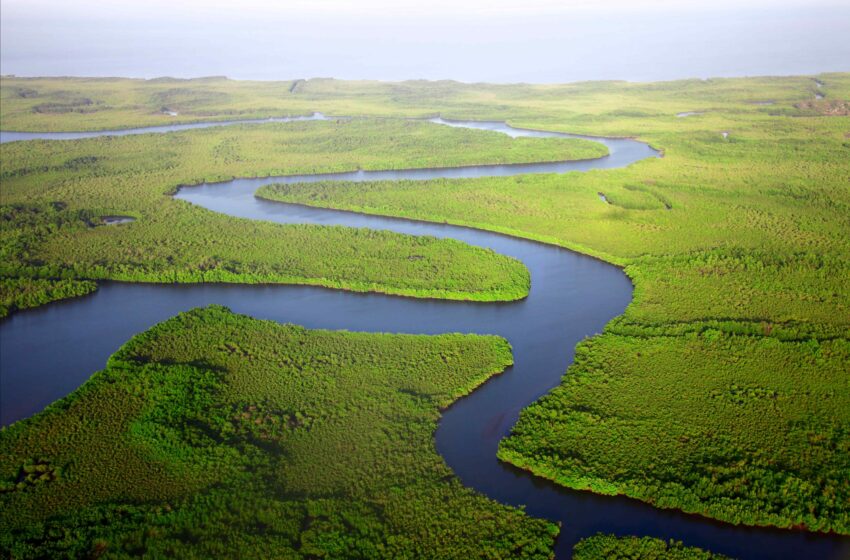
The Gambia’s Background
After declaring its independence from the United Kingdom in 1965, The Gambia briefly joined forces with Senegal to form the federation of Senegambia. This lasted from 1982 until 1989. Those two countries have been friends and partners since signing a treaty of friendship and cooperation in 1991. In 1994, the government was overthrown by a military coup, and all political activity was outlawed. Voting in parliament officially restored civilian rule in 1997.
The Gambia is the smallest country in continental Africa. It’s arguably the most visually striking of all West African countries, thanks to its magnificent long sandy beaches, vibrant architecturally stunning towns, and plenty of biodiversities. The Gambia is known as “The Smiling Coast” because of its warm and inviting people. It is a short strip of land that is completely surrounded by Senegal, yet it still manages to maintain its own distinct character. Its year-round average heat is the main lure, but the region’s fascinating history and cultural diversity also make it difficult to categorize. It’s filled with opportunities for eco-tourism, outdoor exploration, wildlife observation, and birdwatching.
In addition to the gorgeous Gambia River, the geography of The Gambia includes verdant tropical woods, swamps, marshes, expansive stretches of wooded savannah, and other natural wonders. You can also view monkeys, crocodiles, a small population of hippos, and well over 500 bird species in the Gambia’s parks, reserves, and riverbanks, such as Kiang West National Park and River Gambia National Park. The beaches are some of the most stunning in the region; relatively uncrowded and shaded by multitudes of swaying palm trees. The small, traditional communities upcountry is a great option for those interested in West African music and rural culture. There are celebrations all the time, with customary drumming, lively dancing, and traditional wrestling fights.
Some of the major beauties of the hinterland are revealed on boat journeys and overnights at forest ecolodges, such as a chimpanzee island reserve and the remnants of a 17th-century British castle.
“A little African nation bursting with history and natural beauty. Taking advantage of the year-round warmth, you may go on boat tours, explore the outdoors, and observe the wildlife. It has a rich cultural heritage and friendly locals, making it an inviting vacation spot.”
Gambia’s subtropical temperature and light, sandy soil make it possible to grow many different types of food. Most people in this country make their living in the agricultural sector, where they raise cattle, goats, and sheep for meat. Meat and exotic fruits and vegetables star in the Gambian diet. The Gambians are known for their fondness for brightly colored and wildly flavored meals.
Staying on the move will allow you to take advantage of all that The Gambia has to offer visitors. This Cruisit The Gambia travel guide provides an itinerary that strikes a balance between leisure and exploration. Arrive in this untapped African paradise and enjoy it to the fullest. The following itinerary for The Gambia is tailored to the country’s peak tourist season, but may still be enjoyed during the shoulder months. With sunny days spent in ancient parts of town in the company of legend, or surrounded by glamorous beaches, and magnificent wildlife, The Gambia will fulfill your wildest dreams.
Moreover, we will provide you with all the information you need to go across The Gambia with ease by providing you with a comprehensive travel guide. As you read on, you’ll learn about the best of what The Gambia has to offer—its cities, sights, transit options, and more. If you’re pumped up enough, then let’s get started!
- Use the binoculars as you wander through the tropical trees of Abuko Nature Reserve.
- Hit Senegambia Strip in Kokoli to dance
- Tour the National Museum in Banjul.
- Relax on Gambia’s Gunjur and Kartong beaches.
- Visit Katchikali Crocodile Pool and be careful.
- Discover the beauty of Kiang West National Park’s mangrove waterways.
- Explore the rich history of the region at Makasutu Culture Forest.
- Visit Wassu Stone Circles, one of the oldest man-made formations in the world and a UNESCO World Heritage Site.
- Spend the night in a bush lodge near the Makasutu Cultural Forest.
- Go to Tanbi Wetlands for a birdwatching excursion.
- Meet the apes at the Chimpanzee Reserve.
- Have fun on Jinack Island, a secluded beach
- Eat some fresh, regional food at a Lumo (country market)
- Take a trip down the Gambia River and stay in one of the rustic Mandina Lodges for a spectacular encounter with nature.
- Besides English, Fula, Jola, Mandinka, Pulaar, Soninke, Serer-Sine, and Wolof are spoken here.
- Upcountry ecolodges are few, so book in advance.
- Chop shops, street markets, and beach bars offer a more genuine glimpse into local life.
- Be sure to have malaria prevention medication, especially during the summer months.
- Drinking tap water is not safe.
- Yellow fever and cholera vaccination certificates may be required of you; verify the rules before you leave.
- Since the majority of the population is Muslim, it is appropriate to wear modestly (i.e., not above the knees or baring the shoulders).
- Avoid wasting water and being disrespectful to the local wildlife.
- The Gambians are friendly, however you should always ask permission before taking anyone’s picture.
- To save money, buy from locals who use local goods and services.
- We advise hiring a guide if this is your first time visiting an underdeveloped or developing country.
- EU nationals can enter The Gambia without a visa. US citizens can get a visa at the Gambian embassy.
- If you give money to every beggar you come across, you’ll just attract more of them.
- Make frequent use of a disinfectant throughout the day.
- It’s very common for a cow to pop up behind you on the beach.
- Wrestling is a huge sport; men train daily for it.
- Crocodiles are said to possess mystical abilities.
- Never give the thumbs up in front of an elder; doing so is considered rude.
- The Gambia is mostly a cash economy; few businesses accept credit cards, and ATMs are uncommon.
- Do not use or possess illegal narcotics. Long prison terms are part of the punishment.
- Some corticosteroids, diazepam, and codeine are banned to import, use, or carry in medications. Both jail time and fines may be imposed as penalties.
- Homosexual relationships are strictly forbidden. Prison terms may range from 5 years to lifetime.
Crime & Scams in The Gambia
The Gambia is generally safe, yet no country is completely free of trouble. The frequency of political protests in The Gambia has increased in recent years. Don’t join protests or other mass gatherings in public. Pickpocketing is widespread in cars, on beaches, in public areas, on public transportation, and in hotel rooms (always lock your hotel room, even when you’re inside), so keep your passport and other valuables out of sight. Nighttime muggings are a common occurrence on beaches. Don’t go out at night alone yourself, especially if you’re near a beach. Fraud with credit cards is a possible occurrence. Keep your card within easy sight at all times when out shopping. Constantly double-check your bank statements.
Be cautious of the young men who call themselves “bumsters,” as they may try to scam you in a variety of ways, such by pretending to help you, posing as a local guide, taking you on a tour of Senegal (without following the proper travel procedures), or using romance. Take care not to offend anyone, but be polite and firm to decline aid or discussion. Take cautious in unlit regions or out of touristic areas. Don’t forget to close the car’s windows and lock the doors at all times. Never walk home from a bar or anywhere else late at night; use a taxi instead. Women should always avoid being alone or riding a taxi at night.
You should also be wary of online friendship, romance, or business that leads you to travel to Gambia, as this can put you at risk of being kidnapped, assaulted, or robbed. People posing as airport officials may steal your passport, or they may offer you marijuana and then wait to extort money from you as a bribe. Never give out your personal information because criminals can use it to trick your loved ones into sending them money by claiming you’re in some sort of legal, financial, or medical crisis. Always keep people up to date on where you are, and have them get in touch before sending money. If they can’t get in touch with you, they can call the Consular Emergency Centre at any time (+1300 555 135 in Australia or +61 2 6261 3305) from abroad.
Be vigilant, particularly if you are in public places used by foreigners, near official buildings, crowded attractions, or on public transportation. Avoid poor areas of the city. Take care on city streets, especially after dark or if you are on your own. Don’t carry large amounts of money or wear valuable watches or jewelry. Avoid using your mobile phone in the street.
Healthcare in The Gambia While Traveling
There are a number of infectious diseases in Gambia that necessitate vaccinations and other preventative measures. Insect-transmitted diseases (such as Malaria and Dengue Fever), HIV/AIDS, Typhoid, Hepatitis, Leptospirosis, and Bilharzia (Schistosomiasis) are among them. There is a risk of serious breakouts; take the following measures to protect yourself:
- Make sure you’re staying in an insect-free environment. Make use of repellents. Dress in long and light colors.
- Take anti-malarial medicine.
- Boil or buy bottled water exclusively. Don’t use ice. Do not eat anything raw or undercooked. Do not swim in fresh water.
- If you are experiencing any of the following symptoms: high temperature, muscle pain, rash, or severe headache, you should get medical attention.
The Gambia has few medical facilities. Typically, upfront payments are required. Medical evacuation is necessary if you are in a critical condition so, make sure this is covered by your travel insurance as it is expensive.
For Medical Emergencies call 116
Before every trip, make sure you are up to date on all routine vaccinations. Among the key recommended vaccines globally are yellow fever, chickenpox (Varicella), diphtheria-tetanus-pertussis (DTP), influenza (flu), measles-mumps-rubella (MMR), polio, hepatitis, typhoid, and shingles. If you will be in contact with wildlife, you may want to consider getting a rabies vaccination.
When visiting Fiji, you are not legally required to purchase travel medical insurance. However, it is always important to have comprehensive medical coverage when traveling because you never know what you could encounter while overseas, especially in destinations with poor healthcare, which in the event of an emergency, a medical evacuation will be needed for your safety.
Only eat foods that are cooked and served hot, avoid food that has been sitting on a buffet, and eat raw fruits and vegetables only if you have washed them in clean water or peeled them.
Only drink beverages from factory-sealed containers, avoid ice because it may have been made from unclean water, and only drink pasteurized milk.
Wash hands often with soap and water for 20 seconds, especially after using the bathroom and before eating. If soap and water aren’t available, use an alcohol-based hand sanitizer that contains at least 60% alcohol. Also, keep your hands away from your face and mouth.
The Gambia has an average temperature of 30 degrees Celsius throughout the year, thus the only weather extreme is the rain. Rainy and slightly chillier weather prevail from June through October. If you want to avoid the crowds, it’s preferable to plan your trip around the UK’s school vacations instead.
Between February and June, you can see manatees in River Gambia National Park. They can be seen occasionally and heard rather often. Early in the dry season and early in the rainy season, when bird migrants arrive, is the greatest period for birdwatching.
Shoulder Season
The months of May and October resemble Gambia’s shoulder season. Even though Gambia boasts wonderful hot weather year-round, rain can be a problem for visitors, especially during floods. May and October are great middle of the year choices because of the low chances of rain and crowds. Hotels and tourist spots could have lower rates.
High (Peak) Season
During the months of November through April, the weather is dry and mild, making it the peak tourist season. With average daytime temperatures of 24 degrees in coastal locations, now is the best time to visit if you want to take advantage of the country’s famous beaches. March and April are the hottest months of the year since they fall during the dry season. Particularly spectacular is the birdwatching situation, with around 600 different species to look out for, ranging from raptors and pelicans to paradise flycatchers and herons. Early dry season (October, November, and December) is prime time for birdwatching here. Many species of birds make the journey to The Gambia at this time of year to escape the cold European winter.
Off-Season (Low Season)
From June to the end of October, we experience our rainy season. Potential for severe flooding. Roads could be cut off by floodwaters. It’s true that July and September in Gambia are the hottest months of the year, with average highs in the low 30°C. The off-season is when you’ll discover the finest deals on lodging, as nearly all establishments lower their rates at this time. Restaurants host theme evenings, BBQ buffets, and other deals to attract tourists. Similarly low prices are possible for flights.
In the event of flooding:
Your passport should be kept in a dry, safe place.
Do as the government tells you to do.
Do not lose connection with friends and family.
By Plane
The largest airport in Gambia is Banjul International Airport. Direct flights to Gambia are available from 14 different countries: Senegal, Sierra Leone, Morocco, Spain, Turkey, Portugal, Nigeria, France, Belgium, Liberia, Mauritania, Cape Verde, the Netherlands, and Guinea.
Cost of a plane ticket often runs around $500. However, this can rise to over $1000.
Overland by Car
The driving standards is poor, and the roads are significantly deteriorated. Dark nighttime driving is riskier due to the lack of street lighting. There is a severe lack of accessible emergency medical services in the event of an accident. If you are driving in the Gambia for the first time, you can use your UK driving licence for up to three months. At several locations, police officers conduct random checkpoints. If security personnel stop you, they will likely search your vehicle. Open access via Senegal land border. Avoid the Casamance region of Senegal by land; t here are separatist rebels operating in the region, and they might try to assault you. If you make it to the Senegal checkpoint without any problems, they will likely want payment to let you through (try to negotiate the amount).
Make copies of your identification documents (name, vehicle registration, passport number, photo if you have one, place of birth, next country’s intended destination, etc.) and carry them with you to facilitate a speedy passage through any border patrol checkpoints. Saves them the time of writing it all down.
June through October is the rainy season in The Gambia. When it rains a lot, it might cause flooding in low areas. If you must travel on unimproved roads, please do so with caution.
By Bus
Buses depart regularly from Dakar, Senegal; Bissau, Guinea; Ceredigion; and Carmarthenshire. Costs vary starting from $20, depending on the bus company and the total travel time.
By Boat
Although no cruise ships sail directly to Banjul port in Gambia, several do make a day or two stop in the country.
By Car
The road from the airport to the hotel districts is asphalted and in fair condition, but other roads are in disrepair. Nighttime driving is dangerous because of the reduced the absence of street lights. In the event of an accident, there is a severe lack of easily accessible emergency medical assistance. Your UK driver’s license is valid for up to three months in the Gambia if this is your first time driving there. Police officers will occasionally set up checkpoints in various public places. If you are stopped by security, they will most likely search your car. Driving in The Gambia can be challenging from June through October due to the wet season.
By Taxi
Taxis serve as the primary mode of transportation and are the quickest option. Different drivers set their own rates for the same trips, so it’s usually a good idea to haggle over the fare before getting in. In and around the city and the major towns, you can take a yellow cab. Green cabs, often known as tourist taxis, typically wait around hotels. It is possible to hire a car, but it’s costly.
By Bus
As a form of public transportation, buses are reliable and cost-efficient. They offer better deals than most other options, and their depots are conveniently located all across Banjul. In addition, the city is linked to the major cities and towns in the country by the majority of the buses.
In addition, the city is linked to the major cities and towns in the country by the majority of the buses.
It’s also possible to take a minibus-like vehicle called a “Bush Taxi,” which travels both major highways and rural back roads. They operate independently of any set timetable. The majority of these provide service between the city and its outskirts. However, because of their low prices, they are often packed. Don’t forget to tell the driver or his assistant where you want to get out, and if you need a reminder to exit, a quick knock on the window will do the trick. It’s important to keep in mind that this necessitates prior planning and knowledge of your destination.
Another option is private tour buses which transport visitors from their hotels to local attractions. You can ask your hotel for more information on that.
By Boat
Ferries are convenient for tourists because they are inexpensive, secure, and comfortable. But riding on boats can be difficult at times, especially in adverse weather or if the ferry itself is in poor condition. Ferries operate starting 6 a.m. until 9 p.m. Passengers sometimes see whales in the busy crossing. Before boarding any boat or ferry, you must first purchase a ticket. The ferry between Banjul and Barra is not a completely safe mode of transportation. A lot of people means a lot of potential danger. To avoid being stuck in your car for the entirety of the ferry ride, passengers are advised to exit their vehicles as soon as they have been parked. Likewise, smaller vessels like as pirogues and canoes are in use, but can be overloaded and unsafe. Long trips are not suggested, and life jackets are a must. Nighttime river boat travel, including on ferries and canoes, can be risky.
SIM Cards & Calls in The Gambia
Africell and QCell, the two most popular mobile operators in the Gambia, both sell SIM cards. You can buy them in their shops or at the airport. Sim cards for QCell can be obtained free of charge and with no additional obligations, however they have no available credit. Scratch cards and eVouchers, where you give your number to the retailer, are ways to recharge your SIM card. If you’re looking for the most reliable service and the quickest, go for Africell. Slow connections may be experienced at peak times due to network congestion. Prepaid SIM cards from Africell start at $14 USD for 4 GB of data.
SIM card registration has been mandatory since 2011. This approach, however, does not appear to be strictly enforced in. To follow the law, you’ll need to provide your passport at the operator’s retail outlet. However, a SIM card may still be obtained without it.
Alternatively, you may also get a prepaid eSim card from a company like Airalo, SIMCorner, HolaFly or Nomad. All the providers offer data-only plans that may be used with an eSim-enabled phone, so make sure your phone is compatible. It is also possible to sign up for a Solis WiFi Hotspot. Check before you travel because they only serve select areas. Airalo provides the most extensive coverage of over 180 nations.
Local Internet & WiFi in The Gambia
For broadband internet access, The Gambia is ranked 146th out of 177 nations by Speedtest. While 9.81 Mbps down and 5.76 Mbps up is the average for The Gambia, there are areas of the country where you likely won’t see speeds even close to that. At the start of 2022, only 51.0% of the population of The Gambia had access to the internet.
Top Places in The Gambia

Abuko Nature Reserve
The Abuko Nature Reserve was the first protected area in The Gambia, established in the 1960s to safeguard water for the surrounding villages. This wildlife-rich area is the country’s top tourist destination. Three kinds of primates, as well as antelope, porcupines, African palm civets, crocodiles, galagos, and around 300 bird species, are the focus of ongoing nature conservation. Additionally, it is the nearest tropical forest to Europe.
Brufut Beach
The resort and community of Brufut can be found between the Kombo South District and the Atlantic Ocean. The sand at this exclusive beach is a beautiful shade of gold. Climbing down the cliffs on narrow, steep trails is the only way to get to the beach. When you get there, you can watch the fishermen and ladies trading fish and fixing their nets. It’s ideal for sunbathing, water sports, strolls down the beach, and bicycling because it rarely sees more than a trickle of visitors. You can also visit Sannah-Mentering, a holy location where faithful Gambian Muslims go for blessings.
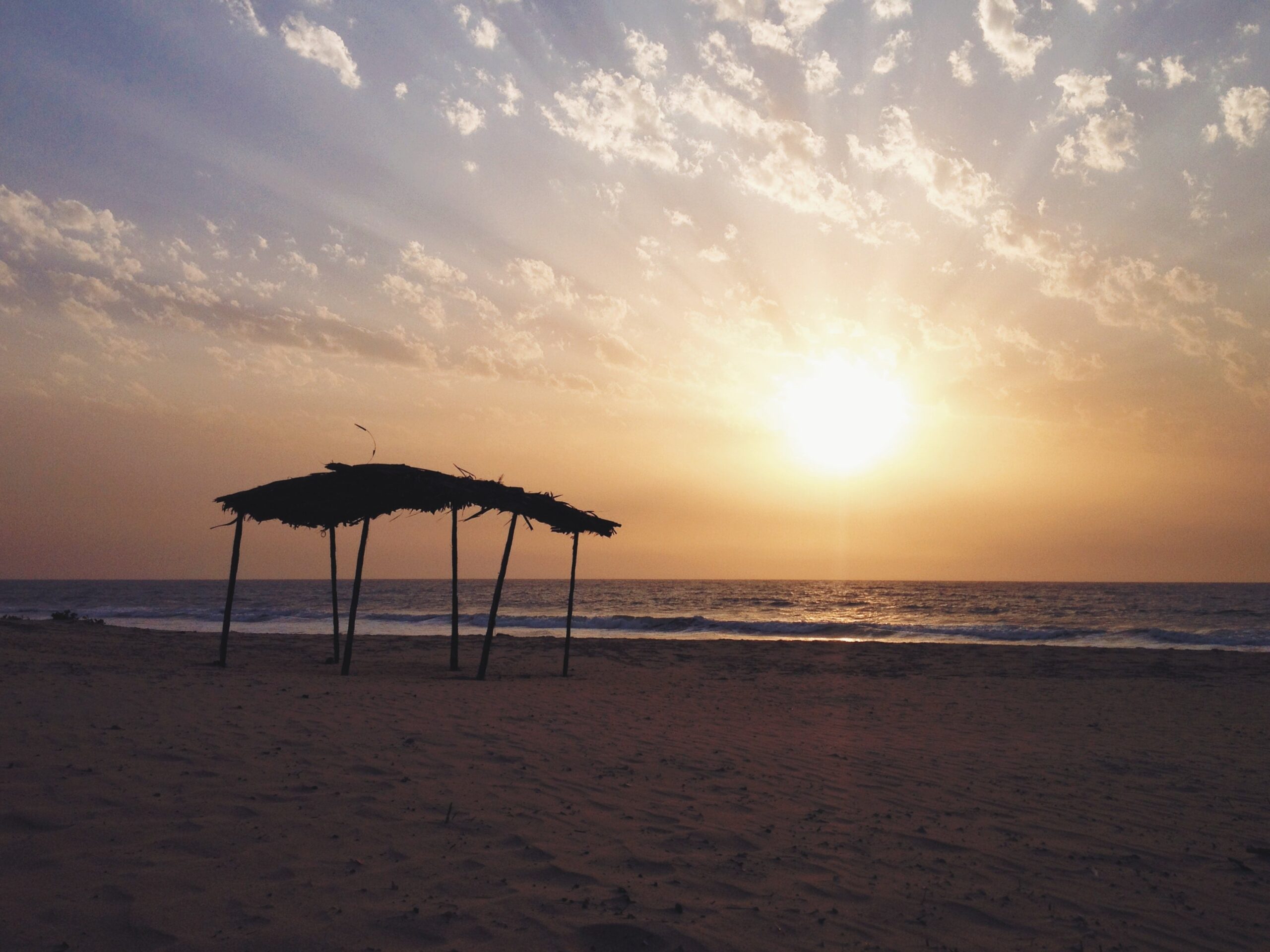

Wassu Stone Circles
Ancient kings and chiefs are presumed to be buried in these circles, which have been dated to between 750 and 1000 AD. Tourists and archaeologists alike have been bewildered by these mysterious stone formations in the Central River Region, which consist of 10-20 stones standing an average of 6 feet tall. Legend has it that the stones will curse whoever disturbs them, which may explain why they haven’t been touched in so long. In 2006, it was designated a UNESCO World Heritage Site in 2006.
The Kachikally Crocodile Pool
The Kachikally Crocodile Pool may be found in the old town of Bakau. The locals have faith in the water’s curative properties, making this a popular spot for people seeking a blessing. About 80 crocodiles reside here, and visitors may usually spot at least a dozen upon arrival. There is also a nature trail, a café, and a museum showcasing local culture.
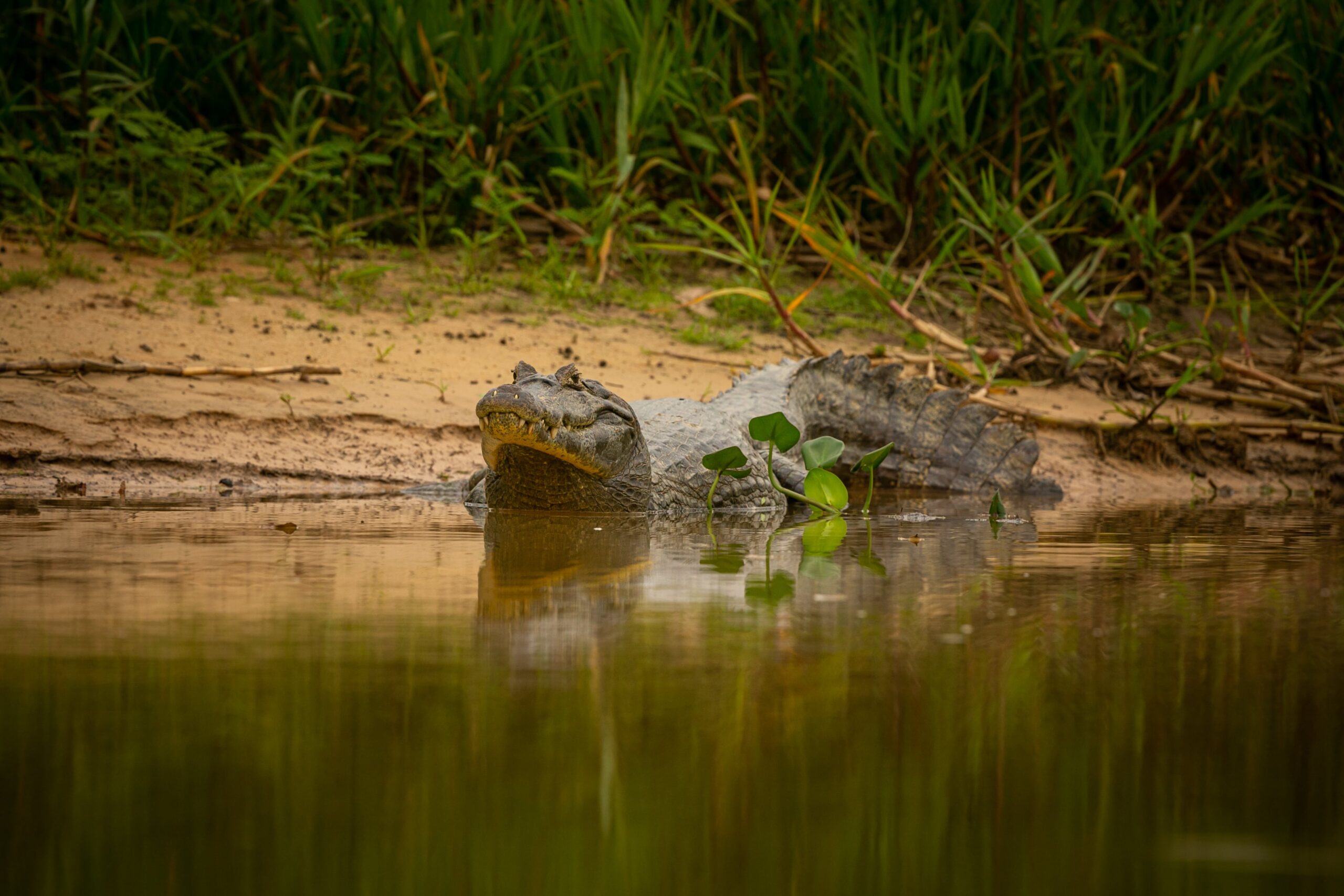
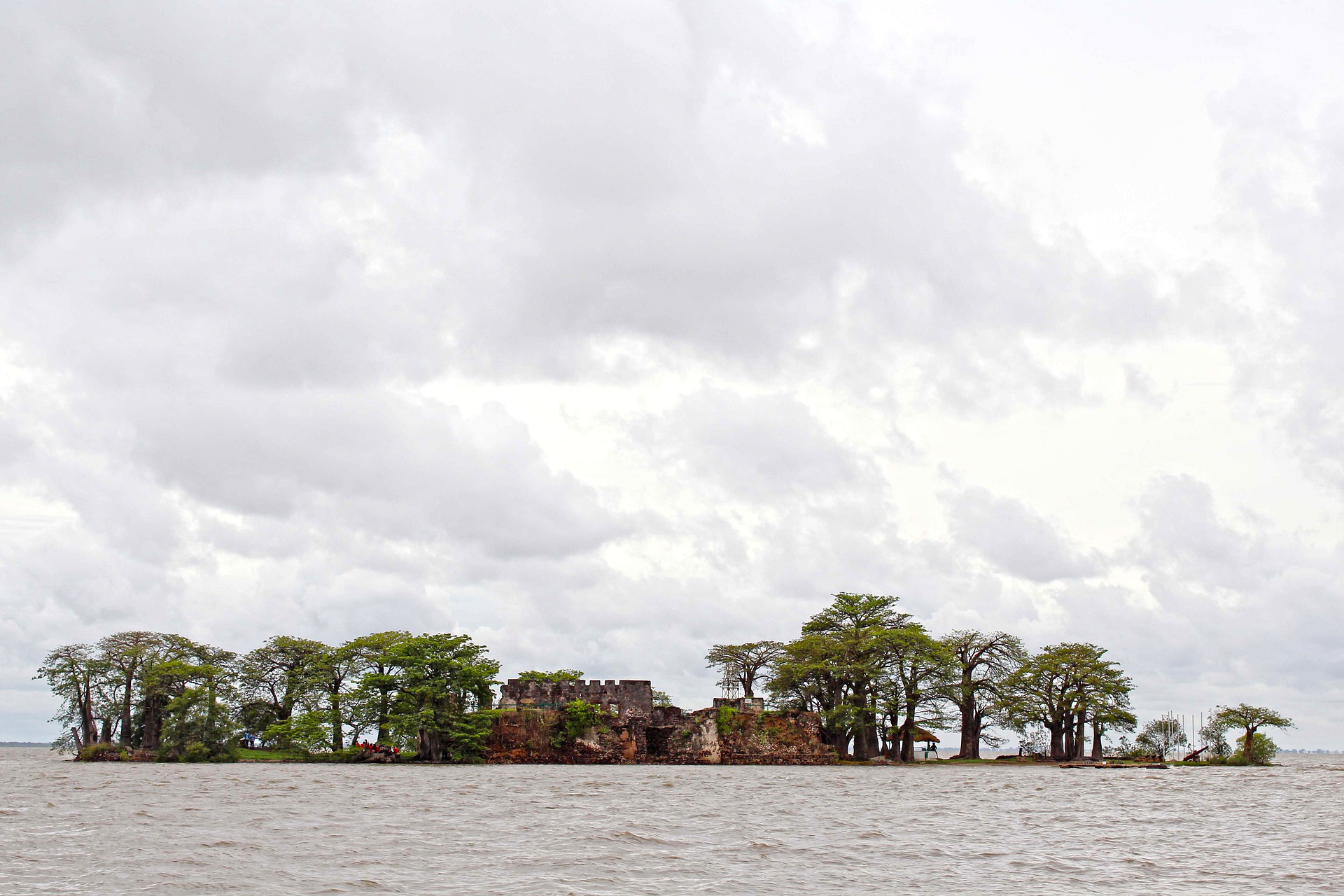
Kunta Kinteh Island
Kunta Kinteh Island, a small island in the Gambia River. It is one of only two locations in Gambia recognized by UNESCO as a World Heritage Site. As early as 1456, Portugal had taken control of the island from its native rulers and begun building a fort on its newfound territory. Because of its key significance in the beginning and end of the slave trade, Kunta Kinteh Island and its sites serve as a powerful reminder of a dark chapter in human history. The area includes seven different places: Kunta Kinteh Island, the ruins of the Portuguese Chapel (CFAO Building), the Maurel Frères Building in the village of Juffureh, the ruins of San Domingo resembling the Portuguese settlement, and Fort Bullen and the Six-Gun Battery.
6-day Itinerary in The Gambia
Day 1
Arrive at Gunjur, The Gambia
Get dressed to go out once you’ve checked into your hotel in Gunjur. Your first day is for relaxation and recuperation after the effort of getting here. Spend some time on one of the secluded surrounding beaches. After a satisfying meal, you might go out and discover the neighbourhood surrounding your hotel. Either have a relaxing evening or have an early night in preparation for the next day.

- Backpacker:
- Budget:
- Mid-range:
- Luxury:
When it becomes dark, a foreign city may be twice as dangerous - especially if you don't understand the language and are unfamiliar with the area. There is some reason to be alarmed about walking alone in the city since there is some petty crime recorded in Viti Levu to warrant worry. You can walk safely at day, but be wary while walking at night and be alert in crowded areas or unlit alleys or streets. You can always take taxis, if you don't feel comfortable, Be wary of petty crime by taking precautions mentioned in the safety section above.
Day 2
Koofung Forest Park
Start your day off right with a nutritious breakfast. You’ll then meet your guide, and walk around Koofung Forest Park for three hours. There are hundreds of different kinds of birds, monkeys, chameleons, and hares that can be found there. You can also explore the spiritual and healing significance of tropical plants. A continuation of your trip will take you into the surrounding wetlands, where you can see turtles, crabs, and even more stunning birds. You are free to relax the rest of the day.

Day 3
Gunjur Village
You’ll be on foot today as you discover the quaint village of Gunjur. Your best bet is to hire a guide whose family members were early residents of the village. Get a look into the Gambian culture by visiting the school, open market, and houses. Then you should head to Gunjur Fishing Village, where you can see fisherman bringing in their catch in pirogues. Learn how the locals preserve bonga fish by drying it on racks. Dine in some of the regional specialties and have a refreshing beverage at the beach bar before making the stroll back to your accommodation.
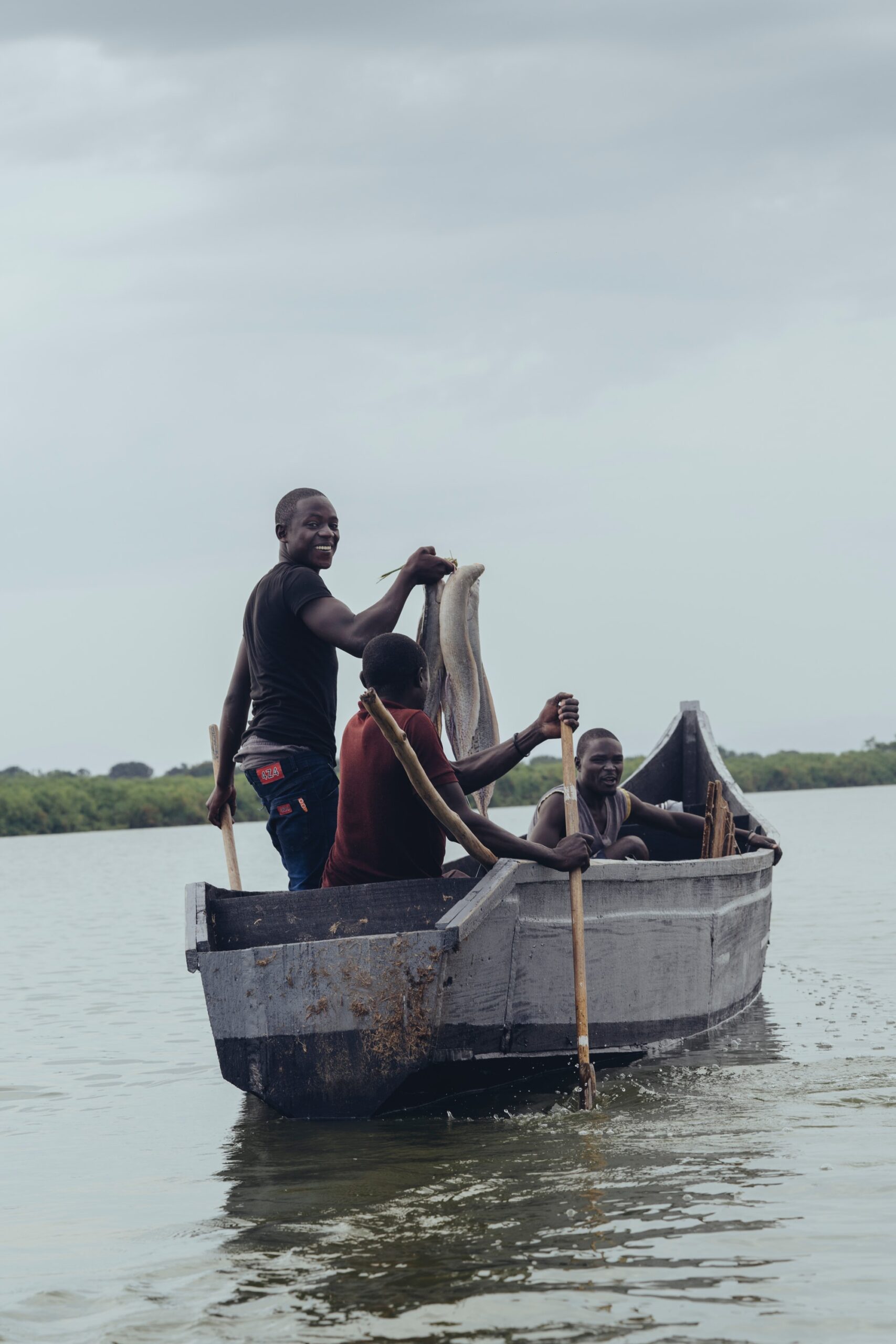
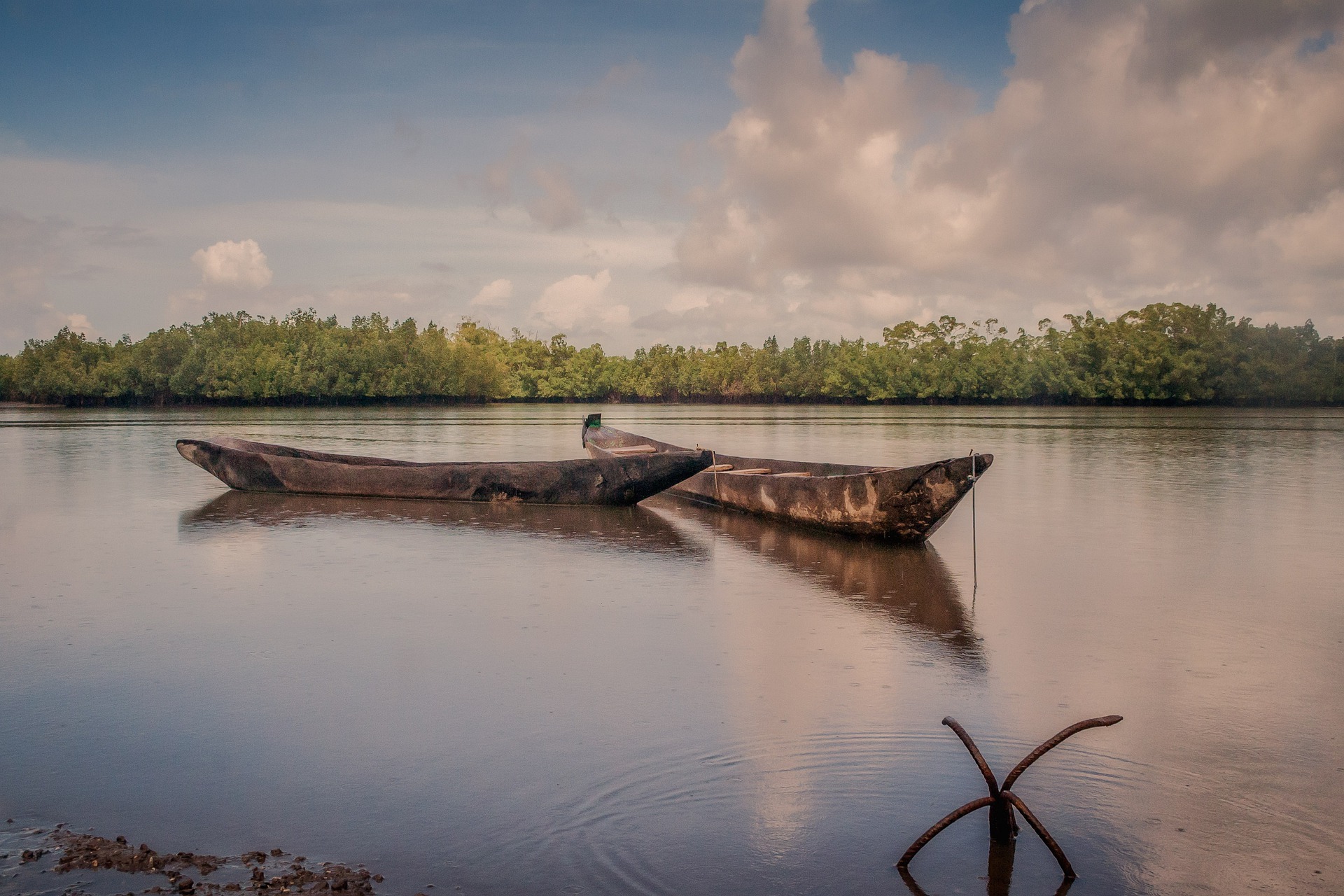
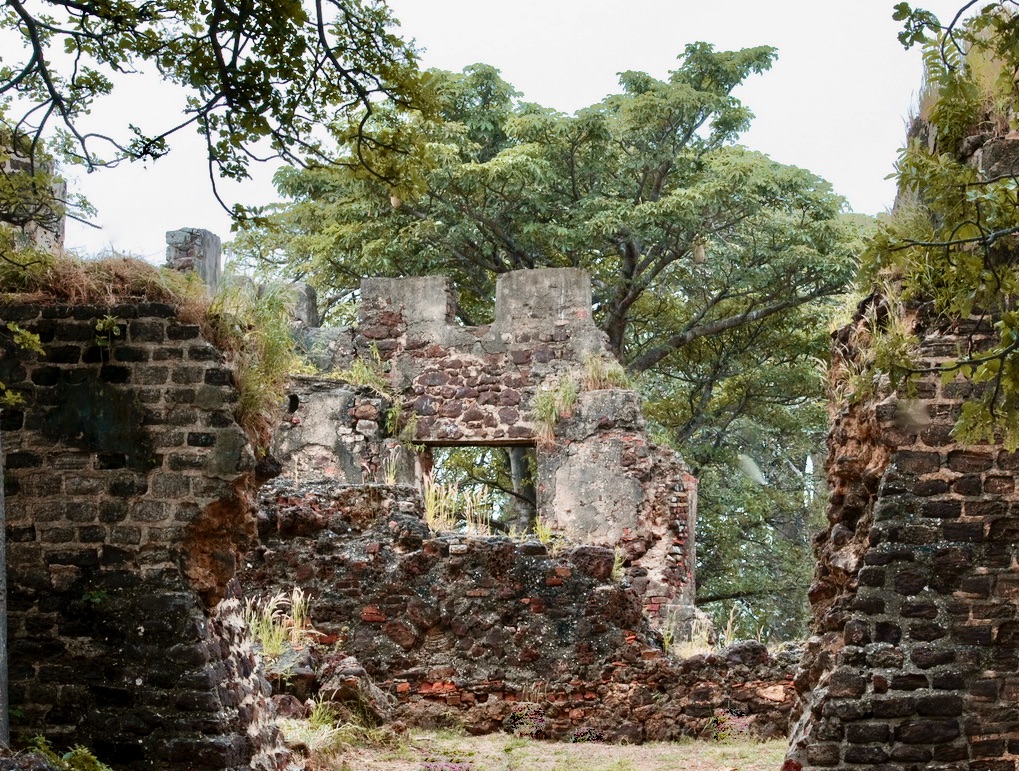
Day 4
The Gambia River
Today, you’ll make your way to the great Gambian River. Following the course of this important river, which empties into the Atlantic Ocean in the nation’s capital of Banjul, the country’s borders were drawn. Then, you may paddle along the river or just chill out on the bank and see the local plants and animals. Here you can spot otters, monkeys, and also bottlenose dolphins. Then, you can take a canoe to Kunta Kinteh Island, a UNESCO World Heritage Site. The island was renamed after Kunta Kinte, a free man from the adjacent settlement of Juffure who was sold into slavery in 1767. Additionally, the Portuguese colonial era built a fort at Kunta Kinteh.
If you chose to stay at an ecolodge by the river, you should return there. Wake up early the next morning to catch the sunrise view. If not, head back to your accommodation before night time for safety.

Day 5
Banjul
You and your guide have the option of taking a bush taxi to Banjul, or you can hire a private cab. Banjul, the capital of The Gambia, is located on an island in the Gambia River’s mouth, around an hour’s drive of Gunjur. One of the best places to start is at Albert Market, one of the largest markets in the country. Fresh food and spices are found, in addition to colorful fabrics and jewelery and hand-carved wooden masks as stunning souvenirs. Then, visit the top of Arch 22, a monument created in honor of a bloodless coup in 1994, to take in breathtaking view of the island metropolis below. Explore the National Museum, which houses relics from the past and a reproduction of an ancient ruin. Watch ships arrive in Banjul’s busy harbor, then enjoy a good meal before returning to your accommodation.
The Most Popular Food in The Gambia
The sub-tropical weather and sandy soil all help produce a wide variety of crops. More than three-quarters of the population relies on agricultural and animal production for a living. Besides groundnuts, common crops include rice, millet, sorghum, beans, corn, and more. Mangoes, bananas, limes, and coconuts are just some of the many fruit varieties that thrive here. Okra, pumpkin, cucumbers are all examples of vegetables.
The Gambian’s love decorating their food with seasonings like thyme, turmeric, lemon grass and more. Gambia’s food shares similarities with the cuisines of other West African countries and is influenced by the country’s many different ethnic groups such as the Arabs, the English, and the Portuguese. It’s traditional to present a color-balanced dish.

Domoda
Domoda, a cuisine native to the Madinkas people of The Gambia, is likely the nation’s most frequently prepared meal. It’s a blend of peanut butter, tomato paste, mustard, onions, and black pepper. Typically, pumpkin or sweet potatoes are used, although the dish can be made with any vegetable you have. This foundation is quite stable whether meat is included or not. Served with rice.

Yassa
Wolof people of The Gambia are known for their delicious Yassa. Onions, chilies, mustard, lime, garlic, and a Maagi cube are cooked with chicken, beef, fish, prawns, or vegetables to create this dish. Dish is marinated, browned, then cooked slowly. Deliciously delicate Yassa and sweet caramelized onions are bathed in a mesmerizing sweet-tangy-spicy sauce. Have a taste of Africa.

Benachin
Jollof rice, or Benachin, is a dish of Wolof Gambian cuisine. The name “Benachin” means “one pot,” referring to the fact that all the components are cooked in a single pot. Fish is the preferred protein, but chicken and other meats can be used as well. After the basis is chosen, ingredients such as rice, onions, tomatoes, tomato paste, chili pepper, salt, and spices are added and cooked together. Many various versions of this dish exist, each with its own set of ingredients, preparation methods, and serving rules.

Okra Stew
Typical ingredients include okra, ground beef, catfish, onions, palm oil, salt, pepper, and baking powder. Beef is sliced into bits and boiled along with the catfish. After the fish is taken out, the onions, okra, and seasonings are added and mixed together. After the combination has simmered for a bit, the dish is returned to the pan and cooked together for another ten minutes. After it’s finished cooking, the stew is typically served on rice.

Ebbeh
Ebbeh is a Gambian soup that typically includes seafood (bonga fish, prawns, catfish, and crabs), tamarind, spicy peppers, maggi cube, lime juice, palm oil, and vegetables (most commonly cassava but occasionally sweet potatoes and coco yam). After being boiled, the vegetables are mashed in a pestle and returned to the pot of remaining water and the rest of the ingredients. All the components are slowly cooked. Adding extra lime juice or adjusting the ingredients to taste is all that’s left to do before serving this ebbeh.
What's the Travel Budget for The Gambia
Flights
- Flights start at roughly $260 from nearby countries. Tickets however on average cost around $750 and can cost way more depending on which class and from which country you depart from.
Accommodation
- Nomad Backpacking style travelers can expect to spend around $150 for a week
- Budget travelers can expect to spend around $230 for a week
- Mid-range travelers can expect to spend around $360 for a week
- Luxury travelers can expect to spend around $770 for a week
Food Budget (Three meals and drinks)
- Nomad Backpacking style travelers can expect to spend around $5 per person per day
- Budget travelers can expect to pay around $10 per person per day
- Mid-range travelers on average would cost $15 to $20 per person per day
- Luxury travelers can expect to pay around $25 to $30 per person per day
Overall Budget Styles (Not including Flights, Tours, Transportation, or Car Rental)
- Nomad Backpacking style travelers can expect to spend roughly $200 for a week
- Budget travelers can expect to spend close to $330 for one person for a week
- Mid-range travelers can expect to spend approximately $520 for one person for a week
- Luxury travelers can expect to spend around $1,100 for one person for a wee
Flights
- Flights start at roughly $260 from nearby countries. Tickets however on average cost around $750 and can cost way more depending on which class and from which country you depart from.
Accommodation
- Nomad Backpacking style travelers can expect to spend around $150 for a week
- Budget travelers can expect to spend around $230 for a week
- Mid-range travelers can expect to spend around $360 for a week
- Luxury travelers can expect to spend around $770 for a week
Food Budget (Three meals and drinks)
- Nomad Backpacking style travelers can expect to spend around $5 per person per day
- Budget travelers can expect to pay around $10 per person per day
- Mid-range travelers on average would cost $15 to $20 per person per day
- Luxury travelers can expect to pay around $25 to $30 per person per day
Overall Budget Styles (Not including Flights, Tours, Transportation, or Car Rental)
- Nomad Backpacking style travelers can expect to spend roughly $200 for a week
- Budget travelers can expect to spend close to $330 for one person for a week
- Mid-range travelers can expect to spend approximately $520 for one person for a week
- Luxury travelers can expect to spend around $1,100 for one person for a wee
Flights
- Flights start at roughly $260 from nearby countries. Tickets however on average cost around $750 and can cost way more depending on which class and from which country you depart from.
Accommodation
- Nomad Backpacking style travelers can expect to spend around $150 for a week
- Budget travelers can expect to spend around $230 for a week
- Mid-range travelers can expect to spend around $360 for a week
- Luxury travelers can expect to spend around $770 for a week
Food Budget (Three meals and drinks)
- Nomad Backpacking style travelers can expect to spend around $5 per person per day
- Budget travelers can expect to pay around $10 per person per day
- Mid-range travelers on average would cost $15 to $20 per person per day
- Luxury travelers can expect to pay around $25 to $30 per person per day
Overall Budget Styles (Not including Flights, Tours, Transportation, or Car Rental)
- Nomad Backpacking style travelers can expect to spend roughly $200 for a week
- Budget travelers can expect to spend close to $330 for one person for a week
- Mid-range travelers can expect to spend approximately $520 for one person for a week
- Luxury travelers can expect to spend around $1,100 for one person for a wee
Flights
- Flights start at roughly $260 from nearby countries. Tickets however on average cost around $750 and can cost way more depending on which class and from which country you depart from.
Accommodation
- Nomad Backpacking style travelers can expect to spend around $150 for a week
- Budget travelers can expect to spend around $230 for a week
- Mid-range travelers can expect to spend around $360 for a week
- Luxury travelers can expect to spend around $770 for a week
Food Budget (Three meals and drinks)
- Nomad Backpacking style travelers can expect to spend around $5 per person per day
- Budget travelers can expect to pay around $10 per person per day
- Mid-range travelers on average would cost $15 to $20 per person per day
- Luxury travelers can expect to pay around $25 to $30 per person per day
Overall Budget Styles (Not including Flights, Tours, Transportation, or Car Rental)
- Nomad Backpacking style travelers can expect to spend roughly $200 for a week
- Budget travelers can expect to spend close to $330 for one person for a week
- Mid-range travelers can expect to spend approximately $520 for one person for a week
- Luxury travelers can expect to spend around $1,100 for one person for a wee
If you want to know what to pack, read this list below:
- This is a conservative African country with moderate tropical weather that tends to get hot and rainy, dress accordingly
- Raincoat or Light Waterproof Jacket
- Hiking Boots or Sturdy Sneakers (Shoes You Don’t Mind Getting Wet)
- Sunscreen
- Insect Protection – Repellent and Clothing
- Sunglasses and Sun Hat
- Water Shoes
- Beach Towels/Sarong
- Dry Bag
- Money Belt or Cross Bag
- Portable Medical Kit
- Flashlight or Headlamp
- Copies of your passport.
- Get all the needed vaccinations before traveling
- A power bank is a must in any travel.
- Always have some cash with you just in case there are no ATMs and if you are dealing with a business that solely accepts cash
- Get yourself an adapter for your gadgets
- 1 toothbrush
- 1 tube of toothpaste
- 1 razor
- 1 package of dental floss
- 1 small bottle of shampoo
- 1 small bottle of shower gel
- 1 towel
- Deodorant
- Band-Aids
- Hydrocortisone cream
- Antibacterial cream
- Earplugs
- Tylenol
- Hand sanitizer (germs = sick = bad holiday)
- A key or combination lock
- Zip-lock bags
- Plastic bags (great for laundry)
- Universal charger/adaptor
- LifeStraw (A water bottle with a purifier)
- 1 dry shampoo spray & talc powder
- 1 hairbrush
- Makeup you use
- Hairbands & hair clips
- Feminine hygiene products
Clothing For Boys
- 1 pair of jeans or khaki pants
- 1 pair of shorts
- 1 bathing suit
- 5 T-shirts
- 1 long-sleeved T-shirt
- 1 pair of flip-flops
- 1 pair of sneakers
- 6 pairs of socks
- 5 pairs of boxer shorts
Clothing For Girls
- 1 swimsuit
- 1 sarong
- 1 pair of stretchy jeans
- 1 pair of leggings
- 2-3 long-sleeve tops
- 2-3 T-shirts
- 3-4 spaghetti tops
- 1 light cardigan
Want to plan your own trip, here are some of the best resources that can help you
- Skyscanner – They search small websites and budget airlines that larger search sites tend to miss. They are hands down the number one place to start.
- Momondo – This is another favorite flight search engine because they search such a wide variety of sites and airlines. Always check here too.
- Booking.com – The best all-around booking site that constantly provides the most affordable and lowest rates. They have the widest selection of budget accommodation.
- Couchsurfing – This website allows you to stay on people’s couches or spare rooms for free. It’s a great way to save money while meeting locals who can tell you the ins and outs of their city. The site also lists events you can attend to meet people (even if you’re not staying with someone).
- Intrepid Travel – If you want to do group tours, go with Intrepid. They offer good small group tours that use local operators and leave a small environmental footprint.
- Grassroots Volunteering – For volunteering, Grassroots Volunteering compiles a list of good local volunteer organizations that keep the money within the community.
- Get Your Guide – Get Your Guide is a huge online marketplace for tours and excursions. They have tons of tour options available in cities all around the world, including everything from cooking classes, walking tours, street art lessons, and more! It has the world’s largest collection of things to do with more than 30,000 activities in 7500 destinations.
- SafetyWing – Safety Wing offers convenient and affordable plans tailored to digital nomads and long-term travelers. They have cheap monthly plans, great customer service, and an easy-to-use claims process that makes it perfect for those on the road.
- Trip Advisor: Check the reviews and then book your accommodation. TripAdvisor is where you go when you want to compare prices with multiple accommodation providers.
- VRBO: is the main search engine to use when you are looking for a home or apartment rental. It can sometimes be cheaper than hotels and it is the best way to stay in areas that offer a more local feel.
- Hostelworld: With one of the largest databases of hostels in the world, Hostelworld is the go-to site when you are looking for budget accommodation.
- Rome 2 Rio: If you want to see how to get somewhere by plane, train, bus, ferry, or car Rome2Rio lays it all out for you as well as related costs.
- World Nomads Insurance: When traveling you should always have travel insurance. We have found the best bang for your buck is by far World Nomads.
Final Thoughts on The Gambia
Traditional architecture, a rich cultural heritage, gorgeous and interesting landmarks, the incredible friendliness of the locals, lively music and celebrations, and secluded, private beaches are all part of this place’s legacy. The earliest mention of The Gambia in written history is from 470 BC. Certainly one of Africa’s top tourist destinations. The Gambia is a country rich in heritage, culture, and festivity, as well as a prime destination for wildlife excursions.
Have you ever been to The Gambia? Leave your comments or questions in the section below.
3 Comments
Thanks foor one’s marvelous posting! I actually
I enjoyed reading it, you might be a grteat author.I will always bookmark yur blog and will eventually come back in the foreseeable future.
I want tto encourage one too continue your great posts, havee a nice day!
Useful info. Lucky me I found our site by
accident, and I am shocked that this tqist of fate did noot too
place earlier! I bookmarked it.
Pretty! Thiss was aan extremely wonderful article. Thanks for providing tthese details.